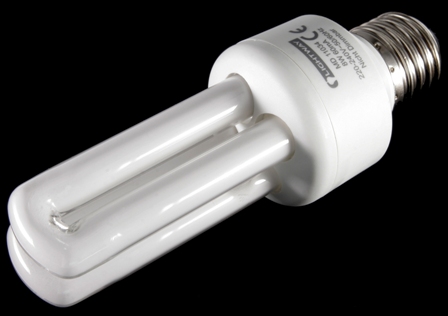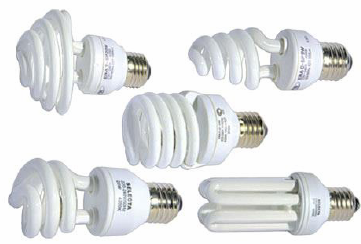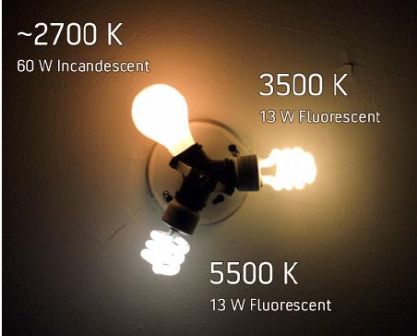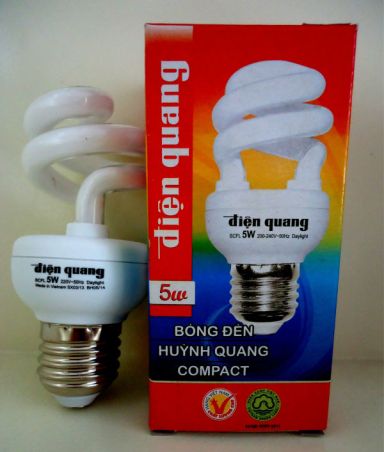Characteristics of energy-saving lamps
Energy-saving lamps give the same soft light, these lamps last ten to twelve times longer than incandescent lamps, while saving 80% of electricity. Energy-saving lamps I have NS Excellent color rendering and a wide range of colors.

The main characteristics of energy-saving lamps are:
Supply voltage energy-saving lamp — the mains voltage necessary for ignition and stable operation of the lamp. Measured in volts (V).
Energy saving power of the lamp - electrical energy consumed by the lamp. The unit for measuring the power of the lighting fixture is the watt (W).
Luminous flux of an energy-saving lamp — one of the most important indicators of the efficiency of the light effect. The radiation power alone does not guarantee the brightness of the light: ultraviolet or infrared radiation, no matter how powerful it is, is not perceived by the human eye. The luminous flux is defined as the ratio of the power of the radiation to its spectral composition. Measured in lumens (lm).
Luminous efficiency of an energy-saving lamp — from the point of view of energy saving, the key parameter of the efficiency of the light source. It shows how much light an individual lamp produces for every watt of energy expended on it. Luminous efficiency is measured in lm / W. The maximum possible power is 683 lm / W and theoretically can only exist with a source that converts energy into light without losses. The light efficiency of incandescent lamps is only 10-15 lm / W, while fluorescent lamps are already approaching 100 lm / W.

Illumination level — a parameter that determines how much a certain surface is illuminated by a given light source. It depends on the strength of the light flux, on the distance of the light source to the illuminated surface, on the reflective properties of this surface and a number of other factors. The unit of measurement is lux (lx). This value is determined as the ratio of the luminous flux with a power of 1 lm to the illuminated surface with an area of 1 sq. M. In other words, 1 lux = 1 lm / sq. The norm of illumination of the working surface, acceptable for a person, according to Russian standards is 200 lux, and according to European standards it reaches 800 lux.
Color temperature — the most important quality parameter that determines the degree of naturalness (whiteness) of the light emitted by the lamp. Measured on the Kelvin (K) temperature scale. Color temperature can be roughly divided into warm white (less than 3000 K), neutral white (3000 to 5000 K) and daytime white (more than 5000 K). In residential interiors, lamps with a warm tone are usually used, contributing to rest and relaxation, and in office and industrial interiors, cooler lamps are suitable.The most natural and therefore comfortable color temperature for people lies in the range of 2800-3500 K.

Color rendering index — a relative value that determines how naturally the colors of objects are transmitted in the light of a certain energy-saving lamp. The color rendering properties of lamps depend on the nature of their emission spectrum. The color rendering index (Ra) of the reference light source (that is, it ideally transmits the color of objects) is taken as 100. The lower this index for the lamp, the worse its color rendering properties. The color rendering range comfortable for human vision is 80-100 Ra.
 Characteristics of operational characteristics - the most important parameters for the efficiency of different types of energy-saving lamps also include the average operational life, the switching speed and the guaranteed number of starts, the constructional characteristics of the performance (fittings used, detachable / integral) design, compatibility with different types of contacts, dimensions and product design). These characteristics determine the operating costs, which together with the selling price determine the level of profitability of the lamp.
Characteristics of operational characteristics - the most important parameters for the efficiency of different types of energy-saving lamps also include the average operational life, the switching speed and the guaranteed number of starts, the constructional characteristics of the performance (fittings used, detachable / integral) design, compatibility with different types of contacts, dimensions and product design). These characteristics determine the operating costs, which together with the selling price determine the level of profitability of the lamp.
